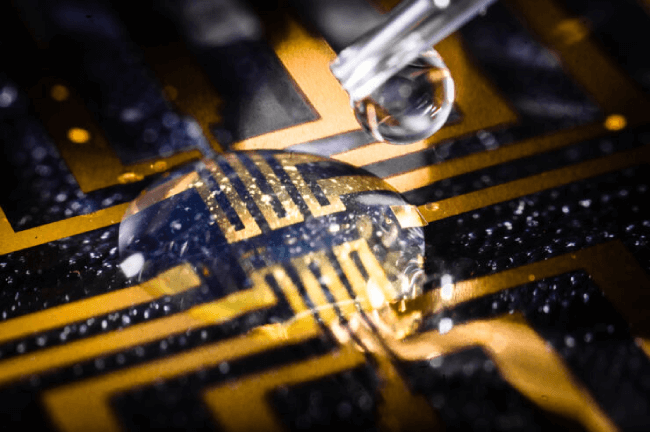Growing Electrodes Inside Living Tissue: The Future of Neural Interface Technology
Insights | 14-03-2023 | By Robin Mitchell
Recently, researchers demonstrated a new technique for growing electrodes in living tissue, eliminating the damaging effects of electrode implantation. This breakthrough in bio-electrical implant technology creates a neural link between the electrode and the tissue without damaging the nerve, making it a safer and more reliable method for medical detection and signal connection. The grown electrode acts as a bridge between the implant and the tissue, allowing for precise and accurate health monitoring. What challenges do bio-electrical interfaces introduce, what did the researchers demonstrate, and how could it help to realise fully implantable interfaces?
What challenges do bio-electrical interfaces introduce?
The idea of implanting devices into the body is almost as old as the idea of robotics and ai, with many science fiction stories orienting themselves around the idea that future humans would be integrated with all kinds of technology. However, despite massive amounts of progress in the field of technology, implantable devices are still crude, with limited functionality.
These limited functionality results are due to the extreme complexity of human biology, the relatively large size of electronics compared to living tissue, the difficulty in implanting devices without resulting in rejection from the immune system, and the sensitivity of flesh to foreign objects. As such, engineers designing electronics for implantation must take extreme care in the choice of materials used and how the device is implanted.
But another challenge that faces engineers when implanting devices is making connections with neurons. While electrical activity can be remotely monitored, direct measurement of neurons is by far the best way to measure activity. At the same time, having direct access to neurons also allows for signals to be fed from electronic circuits into a nervous system. However, nerves are incredibly delicate, meaning implanting electrodes can cause permanent tissue damage. Even if the nerves themselves are not damaged, the surrounding tissue can scar, and blood vessels can bleed.
Researchers grow electrodes inside living tissue
Recognising the challenges faced with electrode implantation and neural links, a team of researchers from Linköping University, Lund University, and the University of Gothenburg have recently demonstrated a new technique for growing electrodes inside living tissue without causing harm.
To grow the electrodes, the researchers developed a cocktail of monomer precursors, building blocks needed to make long polymer chains, as well as a number of different enzymes. When injected into tissue, the enzymes begin to break down glucose and lactate, which feeds the monomers to form long polymer chains. The resulting gel (which is formed with crosslinking molecules pulling the polymer chains together) is significantly more electrically conductive than the surrounding tissue and can be used to send signals as well as detect neuron activity.
Furthermore, the researchers were able to insert electrodes into the tissue to make contact with the gel away from sensitive areas with minimal scarring in the test subjects (in this case, fish). The resulting gel also had no apparent impact on the ability of the test subjects to continue with normal functions. This was also true in the case where the gel was formed inside the brain of fish, demonstrating the possibility for future devices to interface with brain matter safely.
Finally, voltage experimentation of the conductive gel showed a linear current characteristic between voltages of -0.5V and 0.5V, which is more than sufficient for interacting with everyday electronic circuits.

By using the injectable gel, the researchers successfully grew electrodes within living tissue. They further tested this method on a microfabricated circuit. Image credit: Thor Balkhed
How could this development help realise implantable devices?
While the researchers only demonstrated the ability to use biology to grow electrodes inside of tissue, the implications of such technology could be game-changing in the field of implantable electronics. By using biology to grow electrodes, living tissue can be left unaffected during the process without the need for intrusive needles, wires, or other ridged devices that would otherwise cause damage. At the same time, the use of soft conductive gels allows for implanted electrodes to move organically with tissue, making it highly ideal for use in applications that expect mechanical movement (such as joints and muscles).
If the researchers can identify methods for directing the growth of the electrodes, it could allow for a single injected solution to correctly map out a nervous system and provide access points for external devices. From there, it may be possible to restore movement to those who have been paralysed either by direct repair of nerves or using artificial systems to overtake the function of nerves. Such electrodes could also be used to power exoskeletons, providing real-time signals between an operator and the suit, as current methods are generally unable to react fast enough to human motion. It may even be possible for gel-based electrodes to be used in the brain, whereby researchers can better understand the function of each area of the brain and how to manipulate it for curing neural conditions such as Alzheimer’s and dementia.
Overall, what the researchers have demonstrated is genuinely exciting as until now, electrodes have never been grown in living tissue, demonstrated to function, and not cause harm to the organism with the grown electrodes.

